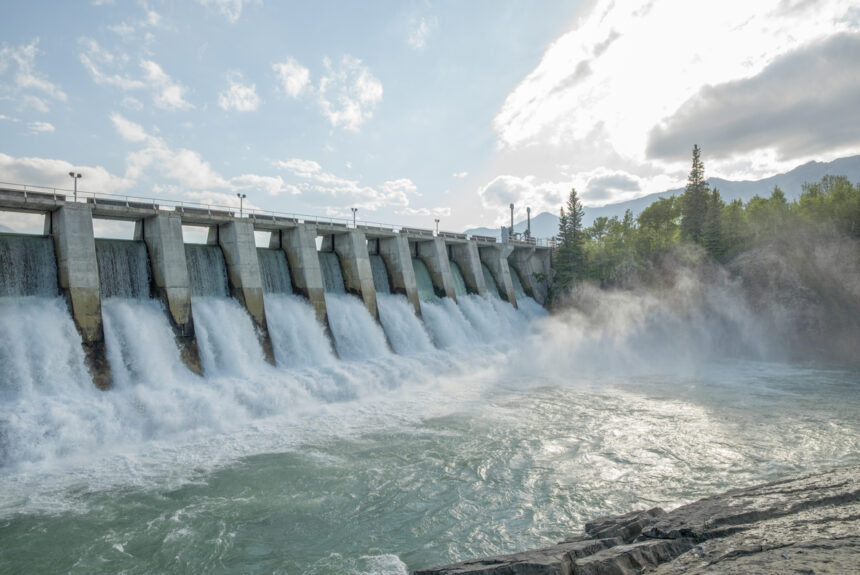On June 24, the Rapidan Dam in southern Minnesota partially failed. Flood waters built up pressure until they broke around the dam, leaving many Minnesotans without power as the Xcel Energy substation washed away. Federal regulators and county officials had been aware of the structure’s condition for years, but no action had yet taken place. Rapidan Dam’s failure comes less than a year after flooding collapsed the Clark Sawmill Dam in Vermont.
>>>READ: Could Micro-Pumped Hydropower Help Farmers?
The Rapidan Dam and the Clark Sawmill Dam are not the only American dams that have seen the effects of aging. Nearly 4,100 dams, found in every state across the nation, are rated at either the same risk level or higher as the Rapidan Dam, according to an analysis by NBC News. If left unaddressed more states could see the same dam failures as what occurred in Minnesota and Vermont. Modernizing the permitting process will help reduce timelines and costs to repair America’s dams.
There are more than 91,000 dams across the United States, more than 8,000 of which are over 90 years old. By 2030, roughly 70 percent of these dams will be more than 50 years old. The most recent Army Society of Civil Engineers report card explained why the threat of failure is such a problem:
“Dam failures not only put the public at risk, but they can also cost our economy billions of dollars in damages. Failure includes more than the dam’s damage, but can negatively impact many other infrastructure systems, such as roads, bridges, and water systems. When a dam fails, resources must be devoted to the prevention and treatment of public health risks as well as the resulting structural consequences.”
When a dam ages to the point of potential failure, officials are left with two options: repair the dam or tear it down. There are now approximately 15,600 high-hazard-potential dams across the United States, and the Federal Emergency Management Agency recently issued guidance for determining whether to tear down or repair these dams, noting, “Dams that pose a high or significant hazard to lives and/or properties are prioritized for rehabilitation. In many cases, the benefits of removing the dam may outweigh the costs of repair and maintenance.”
However, federal red tape makes a potential upgrade or tear-down difficult to complete. Dam operators are having a hard time getting the permits to even just renew operating licenses, let alone tear a dam down or make substantial repairs. A quick glimpse at the Federal Energy Regulatory Commission’s (FERC) page for hydropower permitting reveals a troubling level of complexity—for example, obtaining a traditional hydropower license requires 15 different steps, including but not limited to obtaining permission from FERC to apply, having your application reviewed by multiple governing bodies, holding public meetings, and conducting environmental reviews and analysis. To renew a license, FERC must be notified of intent to apply five years before the current license is set to expire and the renewal application must be filed at least two years before the license expires.
>>>READ: 10 Initial Thoughts on the Permitting Reform Act of 2024
It is also incredibly difficult for dam operators to get approval to make infrastructure upgrades. To upgrade, operators must apply for an amendment to their current operating license to make it match the infrastructure and capacity of an upgraded dam. But the amendment process is nearly as complex as commissioning a new dam—depending on the type of upgrade that is being done, applications could require multiple consultation phases, water quality testing, an environmental review (including input from fish and wildlife regulators), and more. And this is just what is required by FERC—different state and local governments may have additional regulations in place.
There is some political will in Congress to pass hydropower permitting reform. Most recently, the Senate Energy and Natural Resources Committee unveiled a bipartisan permitting bill that included provisions to extend hydropower licenses. The House Natural Resources Committee, meanwhile, is considering the Rural Jobs and Hydropower Expansion Act which specifically targets duplicative hydropower permitting processes.
America’s dams aren’t getting any younger. While there are a lot of questions about the best path forward for dealing with aging dams, red tape could lead to more dam failures regardless of the choice. Permitting reform is needed to improve at-risk dams and keep clean, affordable hydropower online in the U.S.
Kelvey Vander Hart is a native Iowan, a member of the American Conservation Coalition, and a communications specialist at Reason Foundation.
The views and opinions expressed are those of the author’s and do not necessarily reflect the official policy or position of C3.
